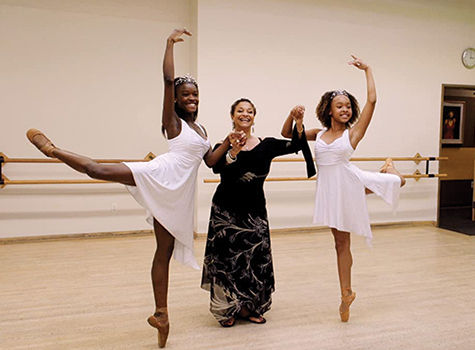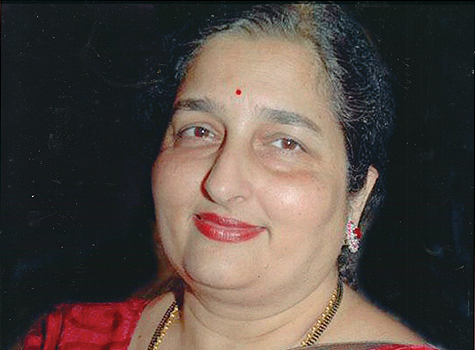
A few years ago, the first ballet that I recall attending as an adult was the Nutcracker, a holiday themed production. All ages can enjoy this production as it transports the viewer to the magic of Christmas. I recall sitting spellbound throughout the whole dance and transferred to another world. After the show, I made plans for going to more ballets and buying season tickets so I could attend ballets throughout the year.
I felt that watching a ballet was very inspiring in that I was witnessing poetry in motion. I could see the grace, devotion, and athleticism in the dancers. As I have been more interested in learning more about ballet and dance in general, over the past holiday I found a documentary on Netflix called Dance Dreams:”ˆHot Chocolate Nutcracker. The unique title piqued my curiosity to want to watch the documentary.
The documentary goes behind the scenes of a famous dancer and choreographer Debbie Allen and how the specific yearly show of the Hot Chocolate Nutcracker was conceived. In the documentary, Allen speaks of her passion for dance and specifically ballet, and how ballet was very exclusive in the time that she was growing up in. She started dance at a young age, and auditioned for a dance school as a preteen, but was denied admission due to her background. She was able to attend another dance school, but when she auditioned for university schooling, she was denied admission.
The reason was because she was critiqued that she did not have the “right body type.”
Having the “right body type” was discussed throughout the documentary and a criterion that was essential for a ballet dancer.
Another teacher in the dance company noted that in Russia, the physical size of the aspiring dancer was measured, and the conditions were very strictly enforced. When looking further into this, another documentary that broaches this topic is “A Beautiful Tragedy” which follows a girl aspiring to be a ballet dancer who also struggles with self-image and anorexia. It is interesting to note that within the film Black Swan, both actresses Mila Kunis and Natalie Portman lost weight for the role. Reading that they had lost such weight, even with their already small frames, and ate unhealthy and very little during the period of filming, is very troubling.
In an article I came across online, a former dancer from the Metropolitan Ballet noted that ballerinas do not necessarily eat healthy and there are extremes that the individual puts themselves through with calorie restriction and having lots of coffee and smoking cigarettes to curb the appetite. It makes one wonder as to the requirements of ballet and if it should be completely re-evaluated due to its subliminal messaging.
While Debbie Allen did not attend the school of her choice for dance, she studied drama, and she did go on to have a career in dance and acting. Yet, when her daughter was interested in dance and was studying ballet under a Russian instructor, the instructor made a derisive comment to her daughter noting her place in dance was with Alvin Ailey (Ailey is well known in dance for creating the Alvin Ailey American Dance Theatre in the 1950s, and received numerous honors, such as from the NAACP, the Kennedy Center, and many honorary doctorates).
While Debbie Allen faced racism herself, when she witnessed the racism that her daughter was enduring, she started a dance company where students from diverse backgrounds could come to learn dance and have a welcoming atmosphere for all dancers regardless of their race, gender, or socioeconomic status. The documentary provides an insight into the different dancers and their experiences in the Debbie Allen Dance Company.
The ballet for the Nutcracker, at its very essence, is not only about the magic of Christmas, but the opportunity for the audience to be able to see various types of cultural dances within the ballet. In the Hot Chocolate Nutcracker, Debbie Allen has a very creative take on the story, where different lands and dance styles such as hip hop are incorporated into the show. It was fascinating to watch how she also incorporates Bollywood inspired dance into the dance production.
What then is art? It all depends on who is asked and their opinions and may also have a cultural context to the answer. For instance, in ballet, maybe someone who is “traditional” will say that a dancer needs to look a certain way and the music must be set to certain pieces. To the “traditionalist” or “purist”, to deviate from that standard could be seen as besmirching to the art form.
Art can reflect society as well. With the style of ballet, the art can reflect what society may think is beautiful, or the pinnacle of beauty and culture.
There is a quote by Cesar A. Cruz that “Art should comfort the disturbed and disturb the comfortable.” To me, this quote applies to the mission of the dance company within the documentary.
Those who are comfortable with the idea of what ballet should be, may be disturbed by the concept that the traditional is now contemporary. And that is where art can reflect the aspirations of society. For the ones who have been disturbed with some of the traditions of mainstream ballet and how harsh it can be on the minds/bodies and well-being of the dancer, now they can find comfort to see that there can be a world that is more inclusive which retains the beauty of the art and can also encompass people of various upbringings in a manner that encourages unity in diversity and comprehensive health.
While the Nutcracker ballet is traditionally performed in the holiday season, during Black History Month this also seems an opportune time to be inspired by the Debbie Allen Dance Company.
For ballet, the art of the Hot Chocolate Nutcracker is the message within its dancers and performers of the diversity, inclusion, and appreciation of people of different backgrounds, looks and classes, coming together to put on a magnificent show.
May we all be encouraged by the message of the artists and work to incorporate this within our daily lives.
This series of articles is about the journey and unique insights of an adult dance student learning classical Indian dance and the experiences and perspective of taking classical Indian dance as both an American and an Indian.
Preethi Sriram is a classical dance enthusiast and lifelong learner of dance. Contact: SriramPreethi@hotmail.com



